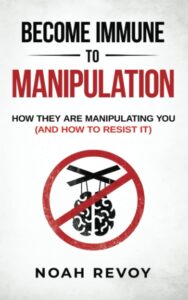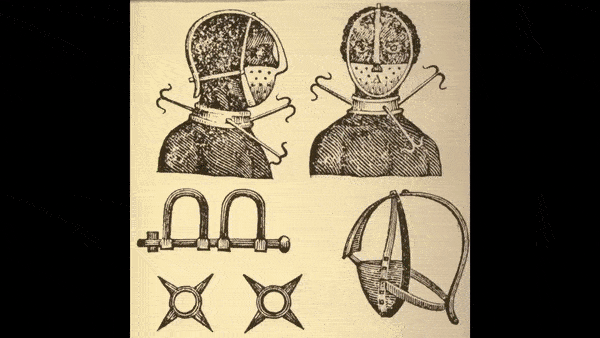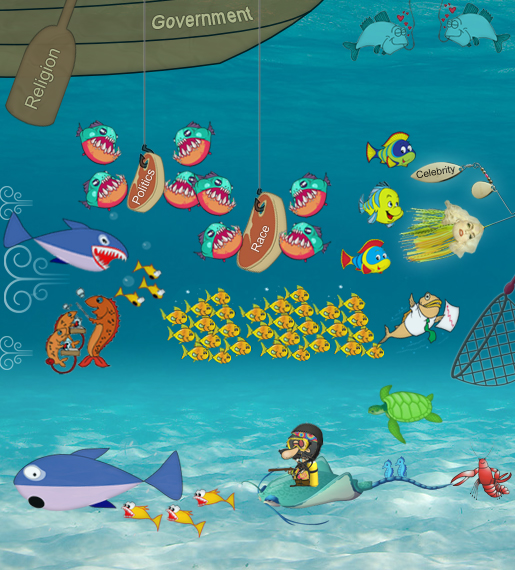In this age of information, mainstream media possesses an undeniably powerful influence over the masses. Its invisible strings shape perceptions, drive public opinion, and often determine social norms. Today, we pull back the curtain on these puppet masters and expose the various tactics employed to control and manipulate the “normies.”
Selective Coverage – Shaping Reality Through Omission and Emphasis
Imagine the media as an artist, and the news as its canvas. The strokes chosen, the colors used, the details added or omitted, all combine to create a specific depiction of reality. This is the essence of selective coverage. Media houses hold the power to select which stories to highlight and how deeply they delve into them. This selective spotlight can dramatically shape our worldview.
Selective coverage can also skew our perspective by placing undue emphasis on certain aspects of a story while downplaying others. A report on a protest could focus heavily on isolated incidents of violence, glossing over the peaceful demonstration by the majority. This manipulation can paint an entirely different picture of events, influencing public sentiment accordingly.
Understanding this form of manipulation is essential. It encourages us to question what we’re shown, to seek diverse news sources and compare their coverage. It pushes us to be active participants in our consumption of news, sifting through the narratives for a more complete understanding of the world around us. Media literacy, after all, is not just about consuming information; it’s about dissecting it.
Propaganda Mechanism – Tailoring Information to Suit Agendas
Step into the crafty world of media propaganda. No longer reserved for dictatorial regimes, it subtly infiltrates your daily news diet, a wolf in sheep’s clothing. Picture the media as an adept chef, cooking up narratives that cleverly align with specific political, economic, or ideological recipes.
Let’s say, for instance, you’re constantly served stories that paint the current government’s policies in a radiant light. Conversely, the competition’s initiatives might be presented with an unappetizing glaze of criticism. Here, the media is subtly stirring public opinion, adding a dash of favoritism here, a sprinkle of demonization there. The result? A feast of information carefully concocted to influence your palate of perspectives.
Similarly, news stories can be tailored to amplify certain societal issues or downplay others, depending on the agenda. Issues affecting marginalized communities might be swept under the media rug, while sensational topics take center stage. This selective recipe of coverage subtly guides your perception, baking it in a certain mold.
As consumers of news, recognizing these ingredients of propaganda can arm us against manipulation. It pushes us to seek a more diverse menu of news sources, compare the flavor of their coverage, and ultimately, strive for a balanced news diet. This way, we take control of our consumption, ensuring we’re not just swallowing what’s being spoon-fed to us. We must remember, we have the right to question the chef, even if they claim to be serving us the truth, well-done.
Fear Mongering – Sowing Seeds of Panic and Discord
Let’s venture into the eerie realm of fear mongering, a sly method often utilized by the mainstream media. By amplifying threats, harping on worst-case scenarios, and highlighting potential dangers, the media can effectively breed an environment simmering with fear, anxiety, and panic.
Take a moment to reflect on the latest pandemic coverage, or the alarmist reports surrounding national security. Have you ever felt an icy shiver of worry coursing through your veins, compelling you to stay glued to the screen for updates? That, dear reader, is fear mongering at work. It’s a high-drama, high-stakes game that the media employs to keep viewers hooked.
This tactic also presents a nifty manipulative tool. It’s no secret that fear can make us more pliable, more accepting of certain measures we might otherwise resist. When wrapped in the claustrophobic cloak of fear, we might find ourselves nodding along to policies or ideologies that promise safety, even at the cost of other freedoms.
Consider the impact of media-fueled fears on societal interactions as well. A continuous barrage of reports highlighting the dangers of a specific group or ideology can sow seeds of mistrust and discord, fracturing the societal fabric.
Recognizing fear mongering requires a critical eye and a refusal to succumb to panic. It calls for us to discern the difference between genuine threats and hyperbolic fear-based narratives. So, the next time you feel that knot of fear tightening in your stomach while watching the news, pause, take a deep breath, and question the narrative being served.

> Check Current Book Prices <The Illusion of Choice – False Dichotomy in Reporting
Picture this, you’re seated in front of your television screen or scrolling through your news feed when you stumble upon a contentious issue. The reporter or news outlet presents only two opposing sides of the argument, with no shades of gray in between. This, folks, is the intriguing dance of false dichotomy, a common ruse utilized by mainstream media.
At its core, this tactic is an oversimplification, a reduction of complex issues into a binary choice. The media weaves a narrative that there are only two roads to take, two teams to join, and two ideas to uphold. It’s a clever trick, essentially an illusion of choice that forces you into a corner.
By reducing multi-faceted issues into an ‘either-or’ proposition, the media cleverly muffles the chorus of varied voices and perspectives that form the rich tapestry of public discourse. Subtle and potent, it stifles debate, quashes nuances, and sidelines any possibility of a middle ground. The result is a skewed understanding of the world that fuels polarization and discord.
Interestingly, this false dichotomy also serves as a tool to steer public sentiment. By presenting one side as ‘good’ and the other as ‘bad,’ the media nudges you towards the ‘acceptable’ choice, subtly shaping your opinions.
So, as discerning consumers of news, how can we guard against this trickery? The antidote lies in critical thinking. As we navigate the media landscape, we need to consciously acknowledge the complexity of issues, resist the lure of binary thinking, and actively seek out diverse perspectives. Remember, in the world of media, nothing is as simple as black and white.



The Bandwagon Effect – Fanning the Flames of Popular Opinion
Let’s hop aboard the media’s bandwagon effect, a compelling spectacle that knows just how to draw in the crowd. Picture this, you’re surfing through the news, and you notice a recurring theme. A particular view or opinion appears everywhere you look, blaring loudly from every corner of the media landscape. This, dear reader, is the bandwagon effect in action.
The media, acting as the enthusiastic cheerleader, often magnifies popular beliefs or opinions, presenting them as the all-consuming, majority standpoint. This strategic amplification serves as an open invitation, enticing you to hop on the bandwagon and join the ranks of the so-called majority.
Interestingly, the media doesn’t stop there. Once aboard the bandwagon, the clamor of opposing views fades into a distant murmur. The dissenting voices, the alternative perspectives, are often drowned out, lost in the sea of amplified majority opinion. This clever tactic creates a self-reinforcing loop, where the popular belief keeps gaining momentum, often hard to resist or break away from.
As a result, the bandwagon effect can subtly mold public opinion, often nudging it towards the more popular, media-endorsed direction. So, how do we ensure we’re not just another face in the crowd, swayed by the media’s influence? The key lies in maintaining a curious mind, always open to diverse perspectives and willing to question the majority narrative. After all, being an informed human being is not about following the herd, it’s about understanding the journey and making conscious decisions on which direction to take.
The Role of Social Media – Amplifying the Echo Chamber
Dive into the digital universe and you’ll find social media platforms serving as colossal amplifiers for mainstream media. Crafted to cater to our preferences, these platforms are governed by ingenious algorithms. They track our clicks, likes, and shares, and, like an attentive butler, serve us content that mirrors our past engagement. This digital dance births what is known as echo chambers.
Imagine an echo chamber as a hall of mirrors, reflecting and multiplying our existing beliefs while systematically blocking out any contrary views. It’s like having a choir that only sings the tunes you’re already humming, drowning out any new melodies. The result is a spiraling reinforcement of our perspectives, often leading to a myopic realmview.
The stakes rise further when you toss in the rampant spread of misinformation. Social media platforms, with their wide reach and rapid dissemination, can become fertile ground for false narratives to take root and flourish. Before you know it, you’re not just in an echo chamber, you’re in a funhouse of distorted facts and skewed realities.
So how can we break free from these amplified echo chambers? It starts with awareness and a healthy dose of skepticism. We need to question the information we consume, cross-reference it, and actively seek varied sources. Don’t let social mainstream media dictate your understanding of the world; instead, use it as a tool to explore different perspectives. Remember, in the realm of social media, it’s our clicks that wield the power, shaping the narratives we consume. Choose wisely, and your echo chamber could transform into a symphony of diverse voices.












